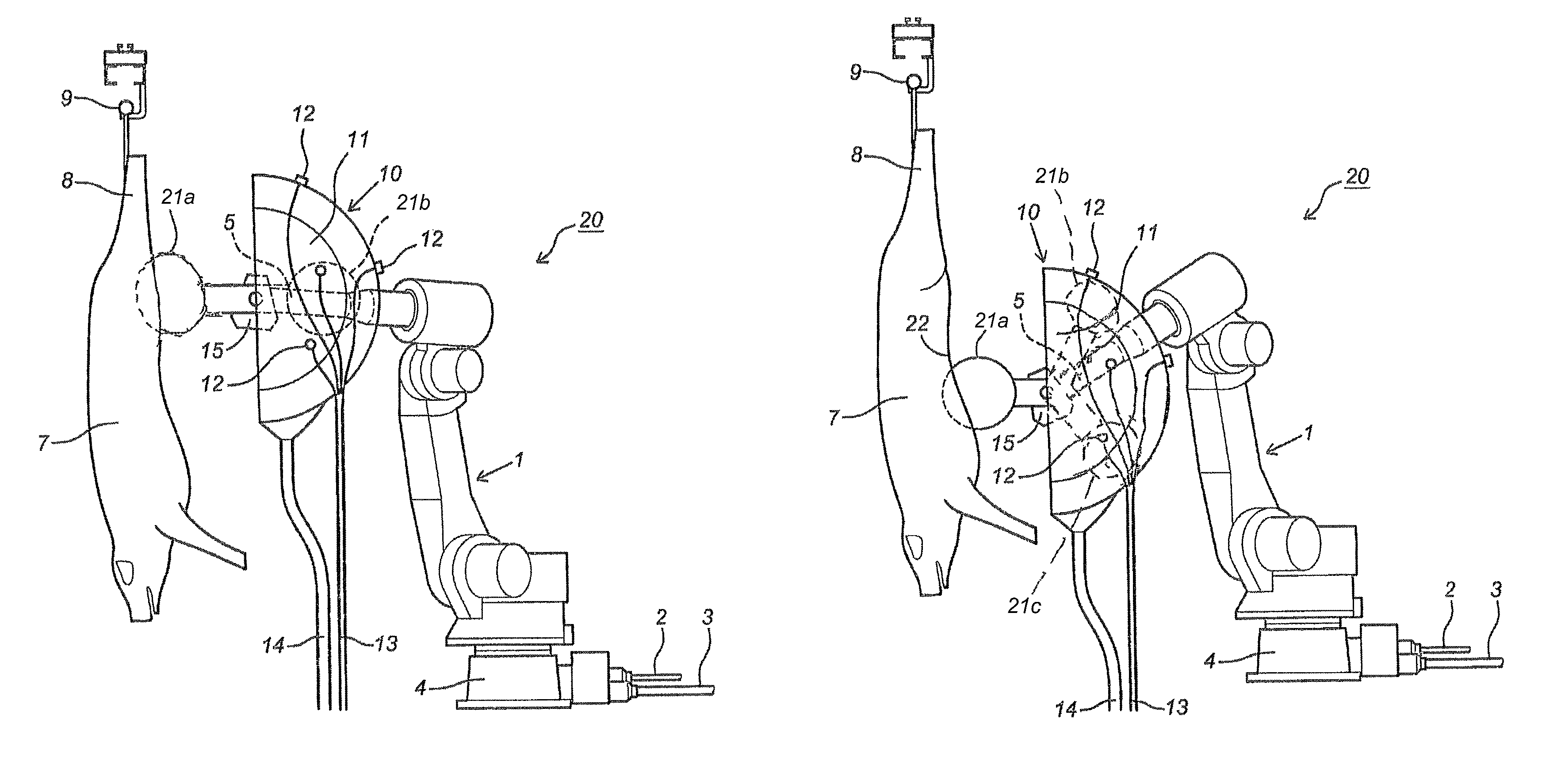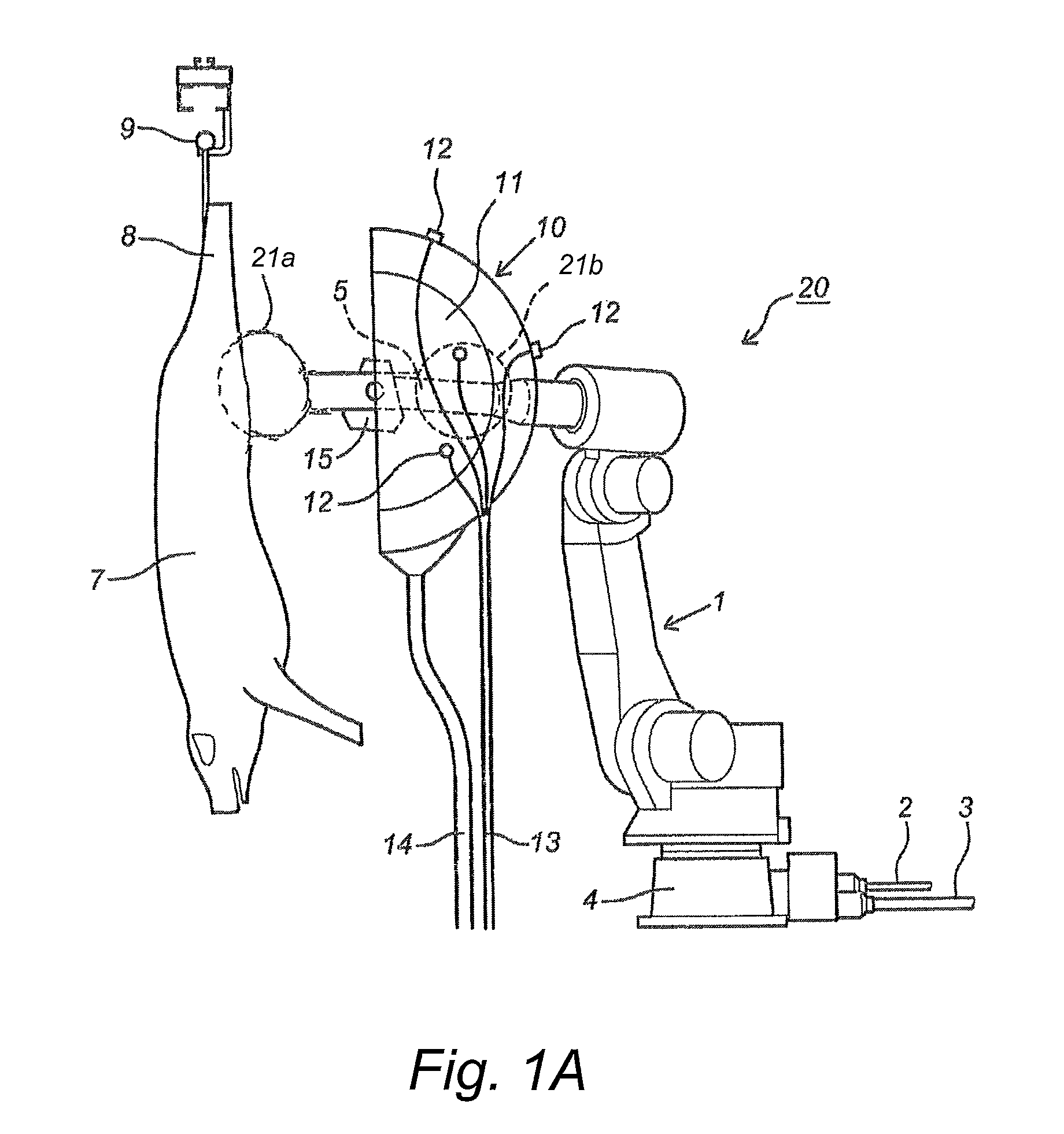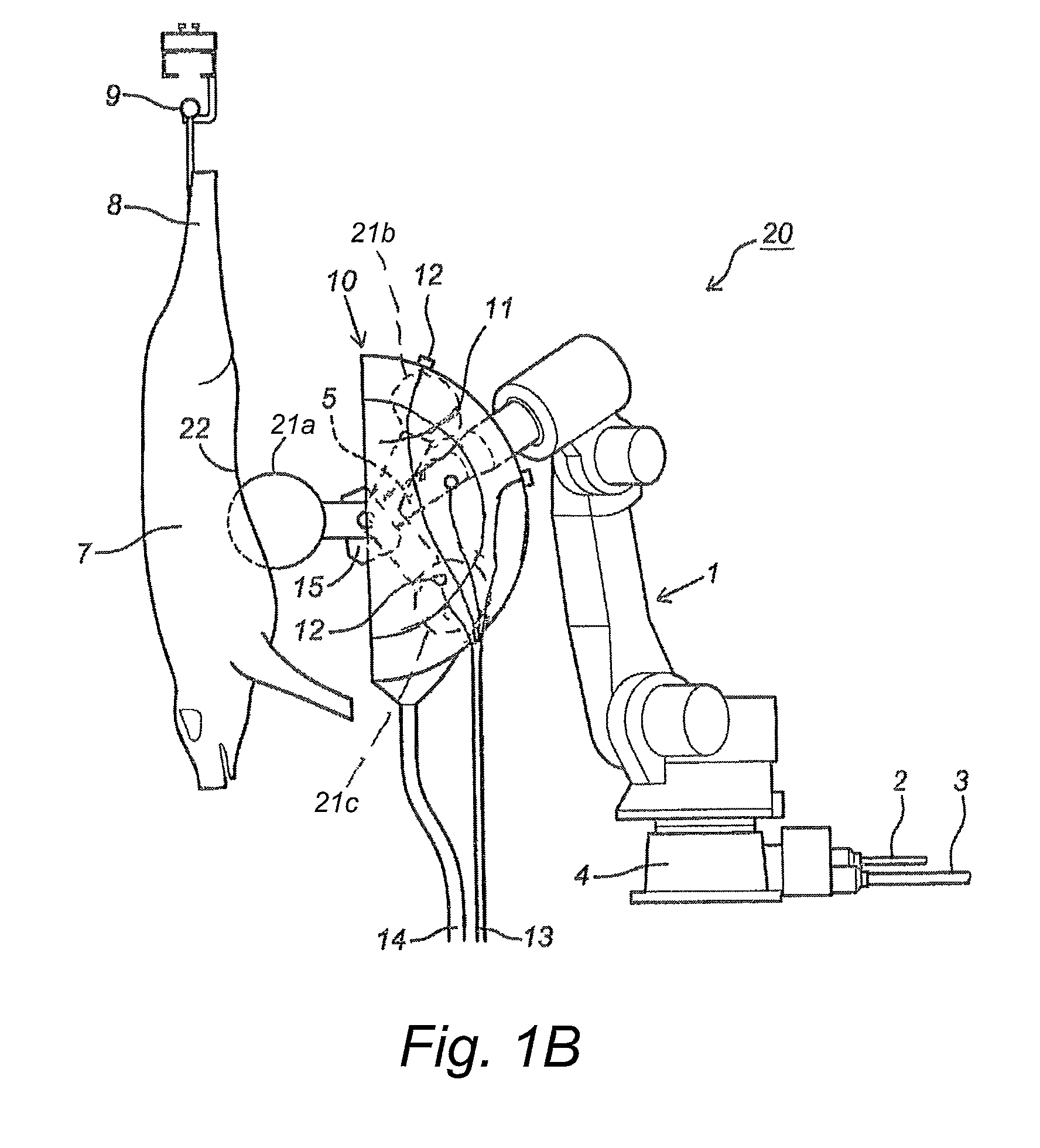Device and method for processing carcasses of livestock
a technology for livestock and carcasses, applied in meat processing plants, butchering, slaughtering accessories, etc., can solve the problems of unnecessary drive for displacing cleaning tools, reduce and improve the use of the capacity of a relatively expensive robot arm, the effect of reducing the susceptibility to device malfunction
- Summary
- Abstract
- Description
- Claims
- Application Information
AI Technical Summary
Benefits of technology
Problems solved by technology
Method used
Image
Examples
Embodiment Construction
[0019]FIG. 1A shows a six-axis robot arm 1 which is connected by means of a control line 2 and a power line 3 to an external control and an external power supply (not shown here). Robot arm 2 is provided with a foot 4 which is connected to the fixed world, and the output shaft 5 of robot arm 1 is situated on the side of robot arm 1 remote from foot 4. Two identical saws 21a, 21b and other parts are mounted on this output shaft 5. The first dressing tool here is a first saw 21a which is mounted on robot arm 1 and which is in an operational mode. A pig carcass 7 is suspended by means of the hind legs 8 from a guide 9 with which the pig carcasses 7 can be carried along different processing stations. The second dressing tool here is a second saw 21b which is mounted on robot arm 1 and which in the shown situation is not being used to process the pig carcass 7. In addition to the two saws 21a, 21b, robot arm 1 also carries a cleaning tool 10 which is shown here as a housing 11 through wh...
PUM
 Login to View More
Login to View More Abstract
Description
Claims
Application Information
 Login to View More
Login to View More - R&D
- Intellectual Property
- Life Sciences
- Materials
- Tech Scout
- Unparalleled Data Quality
- Higher Quality Content
- 60% Fewer Hallucinations
Browse by: Latest US Patents, China's latest patents, Technical Efficacy Thesaurus, Application Domain, Technology Topic, Popular Technical Reports.
© 2025 PatSnap. All rights reserved.Legal|Privacy policy|Modern Slavery Act Transparency Statement|Sitemap|About US| Contact US: help@patsnap.com



